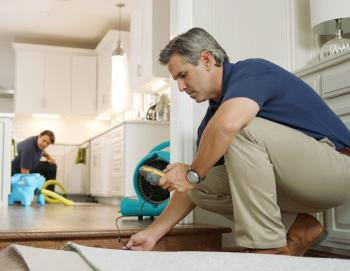Water damage can be a devastating experience for a homeowner, leaving behind serious property damage and an overwhelming sense of distress. While confronting the aftermath of a water disaster is daunting, the good news is that the right help and guidance can make the restoration process much more manageable. In this blog post, we’ll take a look at what you need to know when it comes to water damage restoration, including how to determine the scope of the damage and how to select a reliable water damage restoration contractor.
As Nelson Management Company says, by understanding the process, you can make informed decisions and move forward with confidence as you navigate your way through the restoration process.

Identify the source of the water damage
The first step in any water damage restoration project is to identify the source of the water damage. This is important for determining the most effective course of action for restoration.
If the water source is from a plumbing issue, for example, it may be necessary to address the underlying problem before starting the water damage restoration process.
Get your property back to its best with the professional and efficient services of Big D Water Damage Restoration of Dallas, TX.
If the source of the water damage is from a natural disaster like a flood, it’s important to assess the level of damage and take appropriate steps to ensure it doesn’t spread further. Ultimately, the cause of the water damage must be identified in order to properly plan an effective restoration project.
Evaluate the extent of the damage
After you have identified the source of the water, it is imperative to evaluate the extent of the damage. Depending on the severity of the leak, you may need to inspect your home for any visible signs of warping or mold.
Multiple areas of the property may need to be checked for water damage, including the walls, carpets, and furniture. Determining the full scope of the damage will help you and your restoration team develop an appropriate plan of action.
Remove standing water and personal possessions
The first step in water damage restoration is to remove standing water and any personal possessions that may have been affected. This is especially important if the water is contaminated, as it can spread harmful bacteria and other contaminants.
The best way to do this is by using a wet vacuum to suction out the water, followed by the use of fans and dehumidifiers to dry out the affected area. It is also important to dispose of any porous materials that may have been affected, such as carpets and furniture, to prevent the spread of contaminants.
Implement the appropriate restoration techniques
Once the source of water has been identified and the area has been dried, it is important to implement the appropriate restoration techniques. Depending on the severity of the damage, different techniques may be necessary.
In some cases, a combination of dehumidification, air circulation, and cleaning may be needed. It is important to employ the right professionals and use the appropriate methods to ensure that the restoration is successful.
Monitor the progress of the restoration process
After taking the necessary steps to secure the space, it is crucial to monitor the progress of the restoration process.
This includes examining the moisture levels of the area, inspecting the property for any additional damages, and ensuring the air is tested for quality and safety. Monitoring the progress of the restoration process is essential for ensuring the water damage does not progress and that the process is successful.
It is also important to review all paperwork and documentation related to the process, to ensure that all parties are made aware of the progress of the restoration.
Read More:

